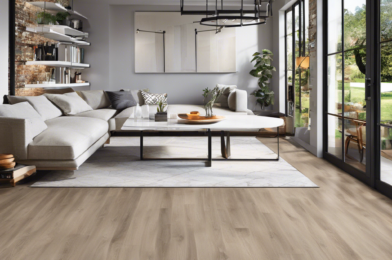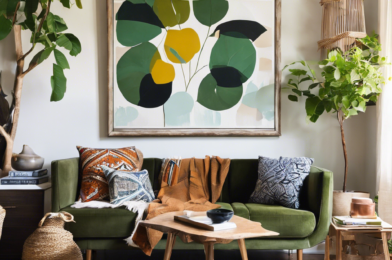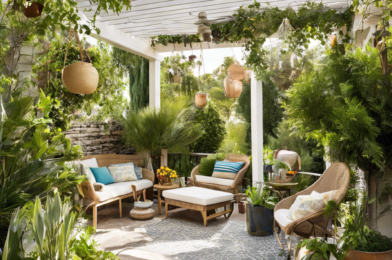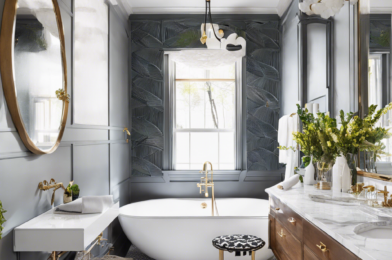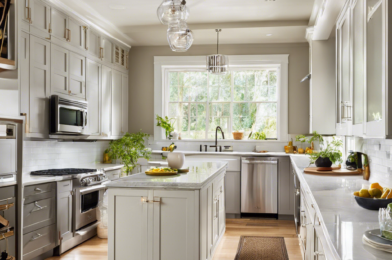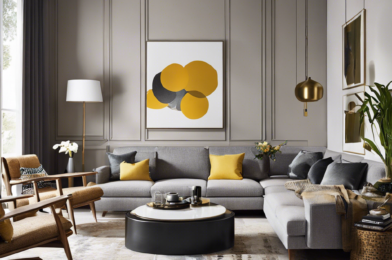**Introduction**
When it comes to flooring options for a modern home, there are countless choices available in the market. Homeowners today seek flooring that not only enhances the aesthetic appeal of their living spaces but also offers durability, ease of maintenance, and comfort. With an array of materials, textures, and designs at your disposal, the task of selecting the right flooring can be daunting. To help you make an informed decision, we have compiled a list of the top five flooring options that are perfect for a contemporary abode. So, whether you’re building your dream home or simply renovating your existing one, read on to discover the best flooring choices that will add style and functionality to your modern home.
**1. Engineered Hardwood Flooring: Timeless Elegance**
Engineered hardwood flooring exudes sophistication and warmth, making it a popular choice for modern homes. Its construction involves a layer of solid wood bonded to a stable substrate, typically plywood. This hybrid composition offers improved durability and resistance to moisture compared to traditional solid hardwood. The manufacturing process allows for a more stable product that can withstand fluctuations in temperature and humidity. Engineered hardwood is available in a vast array of wood species, colors, and textures, ensuring you can find the perfect match for your home’s design aesthetic. Its versatility and ease of installation make it a top choice for those seeking the classic look of hardwood floors with added practicality.
**2. Luxury Vinyl Plank Flooring: Durability and Style**
Luxury vinyl plank (LVP) flooring has revolutionized the flooring industry, offering an incredibly durable and low-maintenance option for modern homes. LVP flooring expertly mimics the look and feel of natural materials, such as wood or stone, thanks to advanced 3D printing technologies. Its multi-layer construction provides superior durability, making it resistant to scratches, stains, and everyday wear and tear. Luxury vinyl plank is also waterproof, making it an excellent choice for moisture-prone areas like kitchens and bathrooms. Installation is typically a breeze with click-and-lock systems, and its comfort underfoot makes it a comfortable option for homes with children or pets.
**3. Porcelain Tile Flooring: Versatile and Low-Maintenance**
Porcelain tile flooring is a go-to option for modern homes due to its incredible versatility, durability, and ease of maintenance. Porcelain tiles are crafted from finely ground sand and clay, fired at high temperatures, resulting in an extremely dense and hard-wearing material. This manufacturing process makes porcelain tiles exceptionally resistant to scratches, stains, and water absorption. The design possibilities with porcelain tile are endless, as it can convincingly replicate the appearance of natural stone, wood, concrete, and even fabric. Whether you’re aiming for a sleek and contemporary look or a rustic, old-world charm, porcelain tile can deliver it all.
**4. Polished Concrete Flooring: Industrial Chic**
For a cutting-edge, industrial aesthetic, polished concrete flooring is a top choice for modern homes. This flooring option is created by grinding and polishing a concrete slab to achieve a smooth, shiny surface that showcases the beauty of the concrete. Polished concrete is highly customizable, allowing for various colors, aggregates, and finishes to be incorporated. It is an extremely durable and long-lasting option, requiring minimal maintenance. Polished concrete is also ideal for those seeking eco-friendly flooring, as it utilizes existing materials and can help regulate indoor temperatures due to its thermal mass properties.
**5. Carpet Tiles: Comfort and Creativity**
Carpet tiles offer a unique and creative flooring solution for modern homes, combining the warmth and comfort of carpet with the flexibility and ease of maintenance of tiles. These modular squares or planks of carpet can be arranged in endless patterns and configurations, allowing for a truly customized look. Carpet tiles are available in a vast array of colors, textures, and designs, making them a designer’s dream. They are also highly practical, as individual tiles can be replaced if stained or damaged, avoiding the need for a complete carpet overhaul.
